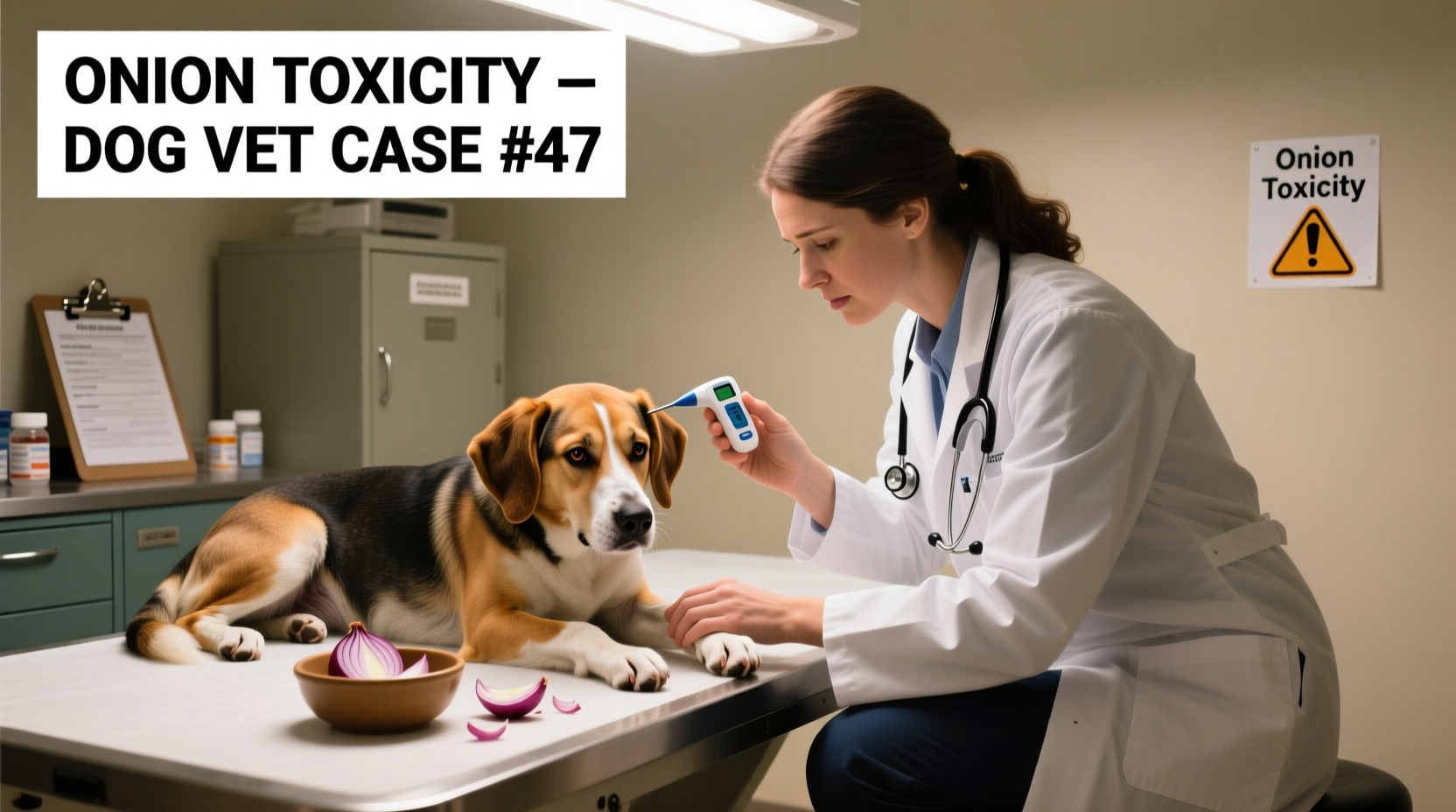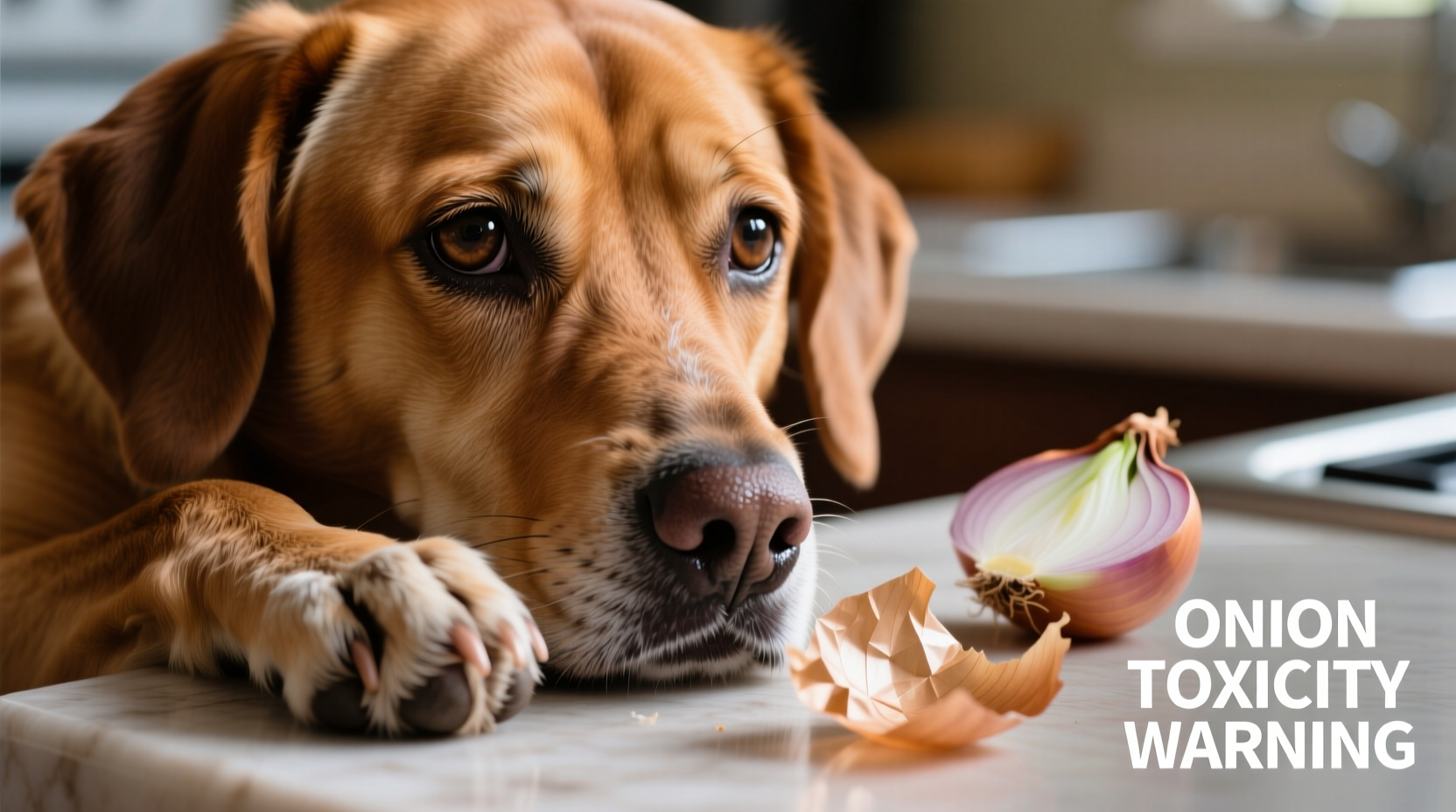If your dog ate a small piece of onion, stay calm but act promptly. While a tiny amount (less than 0.5% of your dog's body weight) may cause minimal risk for most adult dogs, onions contain N-propyl disulfide which damages red blood cells. Immediately call your veterinarian or animal poison control for personalized advice. Do not induce vomiting unless instructed. Monitor for weakness, pale gums, or vomiting over the next 48 hours. Small breeds and puppies face higher risks even with minimal exposure.
Discovering your dog consumed onion triggers immediate concern—and rightfully so. As a pet owner, you need clear, actionable guidance without unnecessary panic. This article provides veterinarian-backed information about onion exposure in dogs, focusing specifically on small quantity incidents like when my dog ate a small piece of onion. We'll walk through exactly what happens next, how to assess risk based on your dog's size, and when professional intervention becomes critical.
Understanding Onion Toxicity in Dogs: The Science Simplified
Onions (and all Allium family members including garlic, leeks, and chives) contain N-propyl disulfide. This compound causes oxidative damage to red blood cells, leading to hemolytic anemia. The toxic principle remains active whether the onion is raw, cooked, or powdered.
According to the ASPCA Animal Poison Control Center, the toxic dose is approximately 15-30 grams of onion per kilogram of body weight. For perspective, a single medium onion weighs about 110 grams. This means even small exposures can be dangerous for toy breeds.

How Much Onion Is Dangerous? Size Matters
| Dog Size | Minimal Risk Amount | High Risk Amount | Immediate Vet Care Needed |
|---|---|---|---|
| Toy breeds (<10 lbs) | < 1/8 teaspoon | 1/4-1/2 tsp | > 1/2 tsp |
| Medium dogs (20-50 lbs) | < 1/2 tsp | 1-2 tsp | > 2 tsp |
| Large dogs (50+ lbs) | < 1 tsp | 1-2 tbsp | > 2 tbsp |
This Veterinary Partner reference shows why understanding your dog's specific risk is crucial. A "small piece" means something very different for a Chihuahua versus a Labrador. The table above provides practical measurements rather than percentages, which are more useful in emergency situations.
Symptom Timeline: What to Watch For
Unlike some toxins that cause immediate vomiting, onion poisoning develops gradually. Understanding this progression helps prevent unnecessary panic while ensuring timely intervention:
- 0-24 hours: Often no visible symptoms. Possible mild gastrointestinal upset (occasional vomiting or diarrhea)
- 24-48 hours: Early signs emerge—lethargy, decreased appetite, rapid breathing
- 48-72 hours: Critical period for anemia symptoms—pale gums, weakness, dark urine (resembling cola)
- 72+ hours: Severe cases may develop jaundice (yellow gums/skin) or collapse
The Merck Veterinary Manual confirms this delayed onset pattern, emphasizing why monitoring is essential even when your dog seems fine initially. Many owners mistakenly believe "no immediate reaction" means safety, potentially missing the critical treatment window.
Immediate Action Plan: What to Do Right Now
Follow these steps if my dog ate a small piece of onion:
- Contact professionals immediately: Call your veterinarian or the ASPCA Animal Poison Control Center (888-426-4435). Have your dog's weight and the estimated onion amount ready.
- Do NOT induce vomiting unless specifically instructed. Improper induction can cause additional complications.
- Preserve evidence: Save any remaining onion or packaging to show the vet.
- Monitor closely: Check gum color every 4 hours using natural light (healthy gums are bubblegum pink).
- Record symptoms: Note any changes in behavior, appetite, or bathroom habits.
When Home Monitoring Suffices (Rare Cases)
For very small exposures in healthy adult dogs over 20 pounds, your vet might approve home monitoring. This applies only when:
- The consumed amount was truly minimal (less than 0.25% of body weight)
- Your dog shows no immediate vomiting or distress
- You have reliable veterinary access within 30 minutes
- Your vet specifically approves this approach after consultation
Never assume your dog is safe without professional assessment. The American Kennel Club emphasizes that even small repeated exposures can accumulate to dangerous levels.
Preventing Future Onion Incidents
Most onion exposures happen accidentally during meal preparation. Protect your dog with these practical strategies:
- Designate a "dog-free zone" in your kitchen during cooking
- Use covered trash cans inaccessible to curious snouts
- Train a solid "leave it" command using positive reinforcement
- Check pet food ingredients for hidden onion powder (common in some commercial foods)
- Educate all household members about toxic foods
Remember that onion powder is 5-10 times more concentrated than fresh onion. A single teaspoon of powder equals a full onion's toxicity. This critical detail often gets overlooked in household safety discussions.
Recovery Outlook: What to Expect
With prompt treatment, most dogs recover fully from small onion exposures. Treatment typically involves:
- Induced vomiting (within 2-4 hours of ingestion)
- Activated charcoal administration
- Intravenous fluids for hydration
- Blood tests to monitor red blood cell counts
- Oxygen therapy in severe cases
Full recovery usually takes 3-7 days with appropriate care. The key factor is early intervention before significant red blood cell damage occurs. Delayed treatment increases complication risks substantially.











 浙公网安备
33010002000092号
浙公网安备
33010002000092号 浙B2-20120091-4
浙B2-20120091-4